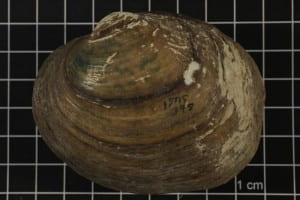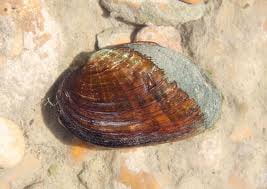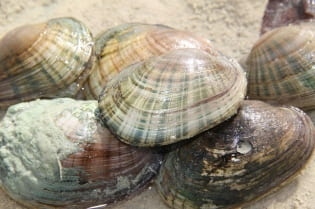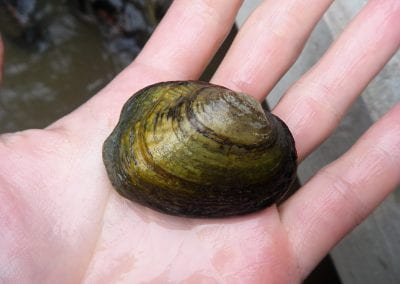Senior Conservation Advocate for the Center for Biological Diversity
In this issue’s Q&A, Texas+Water Editor-in-Chief, Dr. Todd Votteler, interviews Michael Robinson, Senior Conservation Advocate for the Center for Biological Diversity.
Robinson focuses on the protection and recovery of top predators like Mexican gray wolves and jaguars. He has been associated with the Center for Biological Diversity since it was founded in 1989. He holds a master’s degree in literature from the University of Colorado at Boulder and a bachelor’s degree from the University of Texas at Austin. He is also the author of a book on the history of wolves in the United States called Predatory Bureaucracy: The Extermination of Wolves and the Transformation of the West (University Press of Colorado, 2005).
What is the Center of Biological Diversity, and what is its mission?
 The Center for Biological Diversity is a national nonprofit conservation organization dedicated to saving life on earth. We believe that the welfare of human beings is deeply linked to nature, to the existence in our world of a vast diversity of wild animals and plants. Because diversity has intrinsic value, and because its loss impoverishes society, we work to secure a future for all species, great and small, hovering on the brink of extinction. We do so through science, law, and creative media, with a focus on protecting the lands, waters, and climate that species need to survive. We want those who come after us to inherit a world where the wild is still alive.
The Center for Biological Diversity is a national nonprofit conservation organization dedicated to saving life on earth. We believe that the welfare of human beings is deeply linked to nature, to the existence in our world of a vast diversity of wild animals and plants. Because diversity has intrinsic value, and because its loss impoverishes society, we work to secure a future for all species, great and small, hovering on the brink of extinction. We do so through science, law, and creative media, with a focus on protecting the lands, waters, and climate that species need to survive. We want those who come after us to inherit a world where the wild is still alive.
Recently, the U.S. Fish and Wildlife Service (USFWS) proposed the listing of six Central Texas freshwater mussels as endangered (five) and threatened (one) under the Endangered Species Act of 1973. USFWS also proposed designating 1,944 river miles as critical habitat for the mussels. This listing proposal resulted from listing petitions filed by Forest Guardians (now WildEarth Guardians) in 2007 and 2008, and follow-up litigation including a lawsuit filed by the Center of Biological Diversity in April 2021. Can you give us a summary of what led from the first filing in 2007 to the recent proposal from USFWS?
(Note: Texas+Water invited WildEarth Guardians to participate in the Q&A, but WildEarth Guardians declined our invitation.)
Unfortunately, USFWS’s program — which evaluates animal and plant species known to be imperiled and places those that qualify on the threatened and endangered lists — has not received nearly the funding that the magnitude of the extinction crisis requires. Like too many species, the Guadalupe fatmucket, Texas fatmucket, Guadalupe orb, Texas pimpleback, false spike, and Texas fawnsfoot received no protection for their habitats as their numbers and distribution declined. The Center for Biological Diversity tracks the status of imperiled species nationwide. We realized that without federal action these mussels would be doomed — hence our recent lawsuit which may have sped up this proposed rule.
Is the Center for Biological Diversity satisfied with USFWS’s listing proposal?
Yes, although we continue to scrutinize the 96-page proposed rule and may recommend some improvements.
Once the listing process concludes, what role, if any, does the Center for Biological Diversity anticipate playing in the implementation of protections for these freshwater mussels and other aquatic species in Texas?
Texas is a hotspot for biological diversity. The state’s creeks, rivers, aquifers, and springs support an astounding array of life, much of it minute and little noticed. Development throughout so much of the state, not to mention global warming, is reducing flows. At the same time, in some waterways, pollution continues to increase. Part of what makes the Endangered Species Act effective is its proscription on federal agencies destroying or adversely modifying critical habitats. After the listings and critical habitat designations are finalized, the Center for Biological Diversity will do all that we can to ensure that USFWS properly evaluates projects that may harm these river stretches before federal agencies fund or issue permits for such projects.
If the proposed 1,944 river miles of critical habitat are approved within the Guadalupe, Colorado, and Trinity rivers, what would be the implications for any new dams and the replacement of existing dams within the critical habitat? How would the Center for Biological Diversity view such projects?
Freshwater mussels require flowing water to filter for their food, and they parasitize native fish as an essential part of their reproductive strategies, through luring the fish into position for the mussel’s young to cling onto the fish gills until the young mature and drop off. Reservoirs don’t provide the flowing water that the mussels need, and dams block the fish from accessing stretches of river that otherwise would be available for the mussels. As a result, the dams fragment once-continuous mussel populations into smaller and more vulnerable subpopulations. These impacts would have to be evaluated before federal funds and permits could facilitate such projects.
One result of the original listing petitions has been a tremendous increase in research on Texas freshwater mussels, which has significantly expanded our knowledge about those species. Ultimately, what does the Center for Biological Diversity hope the results of the mussel listings will be?
We want to ensure that each of these unique and beautiful mussels will still grace the rivers and creeks of Central Texas hundreds of years from now. We want to make sure these mussels are still utilizing their fascinating reproductive strategy and co-evolving with their host fish, still there in sufficient numbers to feed an occasional waterbird or racoon without risk of extinction. We want these mussels to be there to give wonder to some kid in Texas decades from now who, after dunking in the river on a hot summer day, will come up gasping for air and clutching a mussel and say, “Wow – look at this, feel the curve of its shell, this river is wild!”





